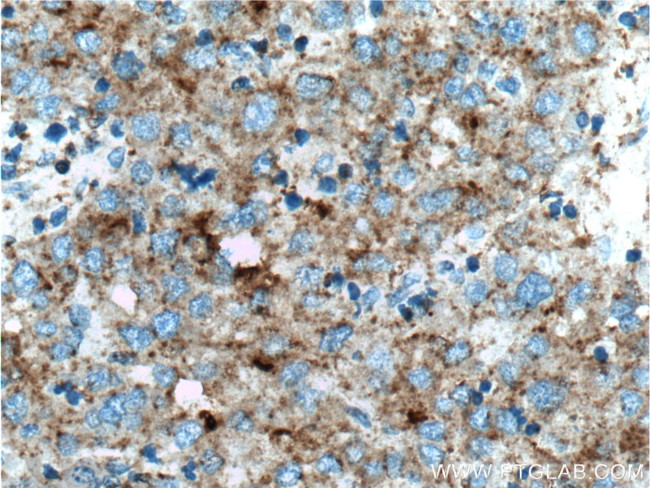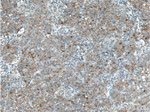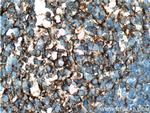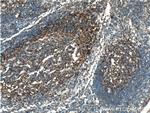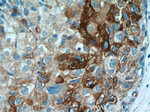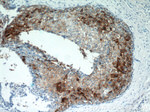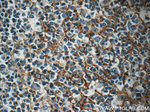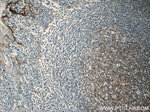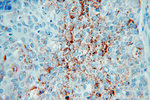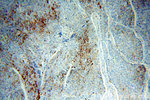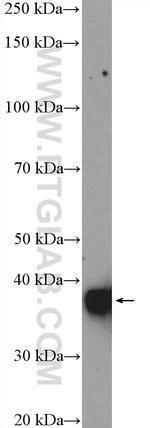Search Thermo Fisher Scientific
Product Details
12289-1-AP
Species Reactivity
Published species
Host/Isotype
Class
Type
Immunogen
Conjugate
Form
Concentration
Purification
Storage buffer
Contains
Storage conditions
Shipping conditions
Product Specific Information
Immunogen sequence: VCNETMMAL WEECKPCLKQ TCMKFYARVC RSGSGLVGRQ LEEFLNQSSP FYFWMNGDRI DSLLENDRQQ THMLDVMQDH FSRASSIIDE LFQDRFFTRE PQDTYHYLPF SLPHRRPHFF FPKSRIVRSL MPFSPYEPLN FHAMFQPFLE MIHEAQQAMD IHFHSPAFQH PPTEFIREGD DDRTVCREIR HNSTGCLRMK DQCDKCREIL SVDCSTNNPS QAKLRRELDE SLQVAERLTR KYNELLKSYQ WKMLNTSSLL EQLNEQFNWV SRLANLTQGE DQYYLRVTTV ASHTSDSDVP SGVTEVVVKL FDSDPITVTV PVEVSRKNPK FMETVAEKAL QEYRKKHREE (101-449 aa encoded by BC010514)
Target Information
Isoform 1 functions as extracellular chaperone that prevents aggregation of nonnative proteins. Prevents stress-induced aggregation of blood plasma proteins. Inhibits formation of amyloid fibrils by APP, APOC2, B2M, CALCA, CSN3, SNCA and aggregation-prone LYZ variants (in vitro). Does not require ATP. Maintains partially unfolded proteins in a state appropriate for subsequent refolding by other chaperones, such as HSPA8/HSC70. Does not refold proteins by itself. Binding to cell surface receptors triggers internalization of the chaperone-client complex and subsequent lysosomal or proteasomal degradation. Secreted isoform 1 protects cells against apoptosis and against cytolysis by complement. Intracellular isoforms interact with ubiquitin and SCF (SKP1-CUL1-F-box protein) E3 ubiquitin-protein ligase complexes and promote the ubiquitination and subsequent proteasomal degradation of target proteins. Promotes proteasomal degradation of COMMD1 and IKBKB. Modulates NF-kappa-B transcriptional activity. Nuclear isoforms promote apoptosis. Mitochondrial isoforms suppress BAX-dependent release of cytochrome c into the cytoplasm and inhibit apoptosis. Plays a role in the regulation of cell proliferation.
For Research Use Only. Not for use in diagnostic procedures. Not for resale without express authorization.
Bioinformatics
Protein Aliases: Aging associated protein 4; Aging-associated gene 4 protein; aging-associated protein 4; apo j; Apo J a; Apo J alpha; Apo J b; Apo J beta; Apo J α; Apo J β; Apo Ja; Apo Jb; Apo-J; ApoJ a; ApoJ alpha; ApoJ b; ApoJ beta; ApoJ α; ApoJ β; ApoJa; ApoJb; Apolipoprotein J; CLI; Clusterin; Clusterin alpha / beta chain; Clustrin; Complement associated protein SP40; Complement cytolysis inhibitor; complement lysis inhibitor; Complement-associated protein SP-40,40; DAG; Dimeric acid glycoprotein; GP80; HGNC:2095; Ku70-binding protein 1; Ku70-binding protein 1 (KUB1); MGC24903; NA1/NA2; SGP-2; Sulfated glycoprotein 2; Sulfated glycoprotein 2 (SGP2); testosterone repressed prostate message; Testosterone repressed prostate message 2; Testosterone repressed prostate message 2 (TPRM2B); testosterone repressed prostate message-2; testosterone-repressed prostate message; Testosterone-repressed prostate message 2; testostrone-repressed prostate message 2; TRPM-2
Gene Aliases: AAG4; AI893575; APO-J; APOJ; CLI; CLU; CLU1; CLU2; D14Ucla3; DAG; KUB1; Msgp-2; NA1/NA2; RATTRPM2B; SGP-2; SGP2; SP-40; SP40; Sugp-2; TRPM-2; TRPM2; TRPM2B; Trpmb
UniProt ID: (Human) P10909, (Rat) P05371, (Mouse) Q06890
Entrez Gene ID: (Human) 1191, (Rat) 24854, (Mouse) 12759

Performance Guarantee
If an Invitrogen™ antibody doesn't perform as described on our website or datasheet,we'll replace the product at no cost to you, or provide you with a credit for a future purchase.*
Learn more
We're here to help
Get expert recommendations for common problems or connect directly with an on staff expert for technical assistance related to applications, equipment and general product use.
Contact tech support
